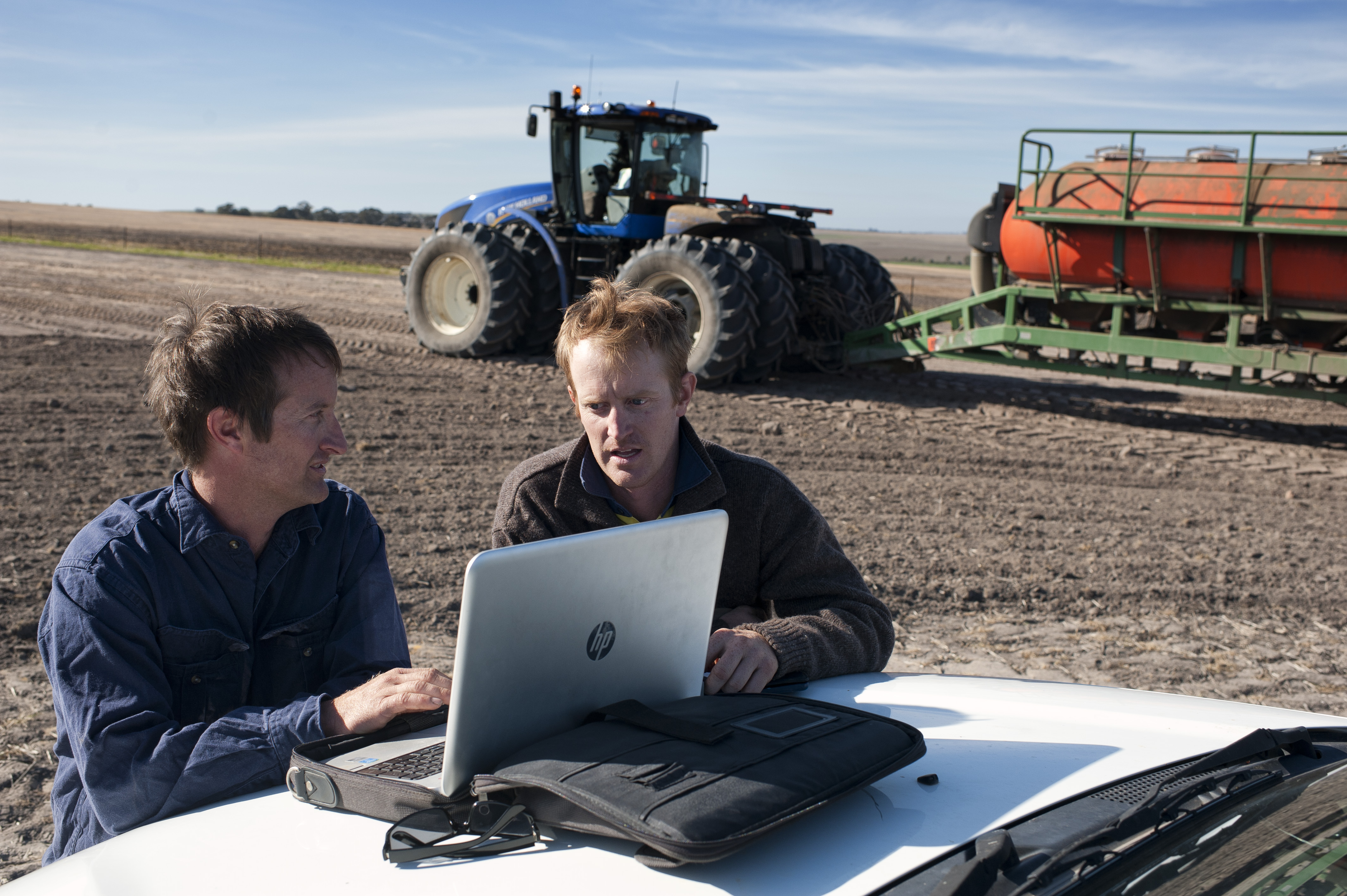The changing soil types on Robert Dempster’s Goomalling farm make fertiliser and chemical application, deep ripping and mould board ploughing nothing short of an ongoing challenge.
“We would have nearly every different soil type on this farm, from gutless, white sandy soils through to grey, heavy 'Sunday' soils,” he said.
This has prompted Robert, who farms with his brother Daniel Dempster, to search for a means of creating maps revealing soil constraints across the farm.
“The frequently changing soil types have made developing a variable rate fertiliser program more than a challenge,” Robert Dempster said.
“With the help of a grant, we settled on radiometric and electromagnetic surveying to a depth of one and a half metres, far beyond the standard 10 centimetre soil testing depth.
“By using the Dual EM technology and combining this with our yield maps we have begun the process of improving our application of nitrogen, potassium and phosphorous.
“We can also use the information to decide if paddocks would benefit from either deep ripping or mould board ploughing.”
Two of their poorest performing paddocks were surveyed, totalling 160 hectares.
Robert Dempster is now in his second year of the three-year project investigating how this technology can improve the sustainability and productivity of farming systems.
This project is supported by natural resource management group Wheatbelt NRM through funding from the Australian Government’s National Landcare Programme.
Wheatbelt NRM’s Dr Guy Boggs said farmers who had similar concepts on how to improve soil management, could also apply for grants of up to $15,000.
“If farmers or farming groups wanted to explore farming methods beyond the standard practices that improve efficiency and the condition of our soils, water or biodiversity resources, they could be eligible for this type of support,” Dr Boggs said.
“The Dempster’s project was of interest because so many farms in the Wheatbelt are already equipped with yield mapping technology.
“We know that we are wasting precious and costly inputs because we’re not working with our soils and making the most of available technology.
“The challenge is that many farmers are unsure of how to identify different soil zones and how to use this information to develop variable fertiliser, liming or soil amelioration programs.
“By comparing simple zoning approaches with more detailed surveys, this could give them the extra information and confidence to do just that.”
In the meantime, Robert Dempster will now share his experiences with other farmers, but is still looking forward to another year of data.
“By using my own personal observations, the electromagnetic surveying and yield mapping, we’ve already begun a variable rate fertiliser program on these paddocks,” Robert Dempster said.
“The EM surveying has provided enough information for us to separate our nitrogen, phosphorous and potassium applications and tailor specifically to each zone.”
The latest round of Trials and Demonstrations funding will run until 12 September 2016.
Resource


